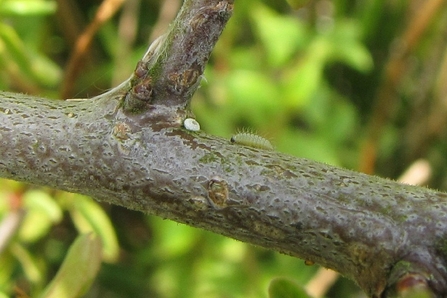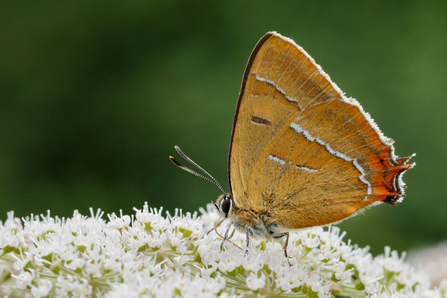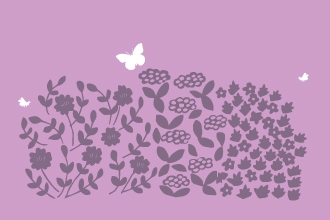Among the hedgerows of Lower Smite Farm, if you look close enough with a hand lens you may spot a white dot on the blackthorn. If you're lucky, this will be an egg of the brown hairstreak butterfly. Their eggs are white, circular and pinhead-sized and are found on young blackthorn shoots at the base of thorns or suckering blackthorn at the hedge bottom during winter. Eggs are laid in late August and September and remain where they are throughout throughout winter - they'll be hatching in just a few weeks time.
During winter Romy, Catharine and I had the honour of joining the farm volunteers in surveying for brown hairstreak butterfly eggs. We split into two teams to search along the blackthorn hedgerows of two fields searching through hand lens for any sign that the brown hairstreak has used this habitat. On the day we were out with the volunteers luck wasn't on my side (although Romy and Catharine found eggs in their section, which were mapped so they can be monitored). I found white eggs but they turned out to be from blue-bordered carpet moths. These weren't the only wild signs that we found - Catharine helped to find a number of harvest mouse nests.






